Trisha Brown Dance Company: Spoleto Intensive
30 July – 3 August 2018, led by Diane Madden
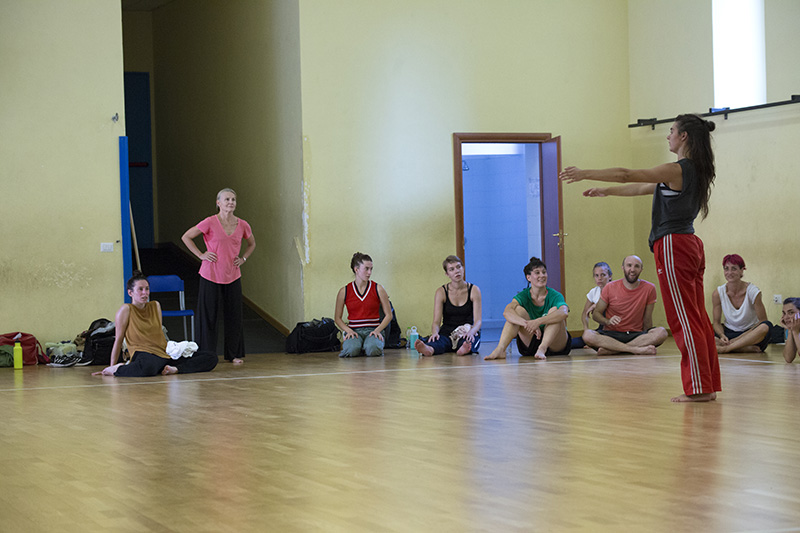
At the end of July we hosted the first ever European Trisha Brown Dance Company workshop intensive. Seventeen performers and choreographers – the youngest aged eighteen, dancing alongside senior lecturers from important conservatoires – joined Diane Madden, Associate Artistic Director of the company, for a week of physical classes, with screenings and seminars programmed in the evenings. The initiative was a result of Diane’s residency with us in 2017. Trisha Brown (1936-2017) was one of the most acclaimed and influential choreographers of her time.
Diane outlines the week: “The Spoleto Intensive offers an immersion in Trisha Brown’s choreographic style as a means of engaging each student’s artistic voice. Through a physical and compositional dance practice that builds from internal to external, simple to complex, we will move through technique, repertory, improvisation, composition and performance, culminating in an open studio showing of the weeks work. Our physical practice will be supported by video and written materials from the TBDC archive. Additionally, halfway through the Intensive, the curator of the Mahler & LeWitt Studios, Guy Robertson, will lead a discussion exploring the relationship between the visual arts and dance practices, particularly in relation to the work of Sol LeWitt.”
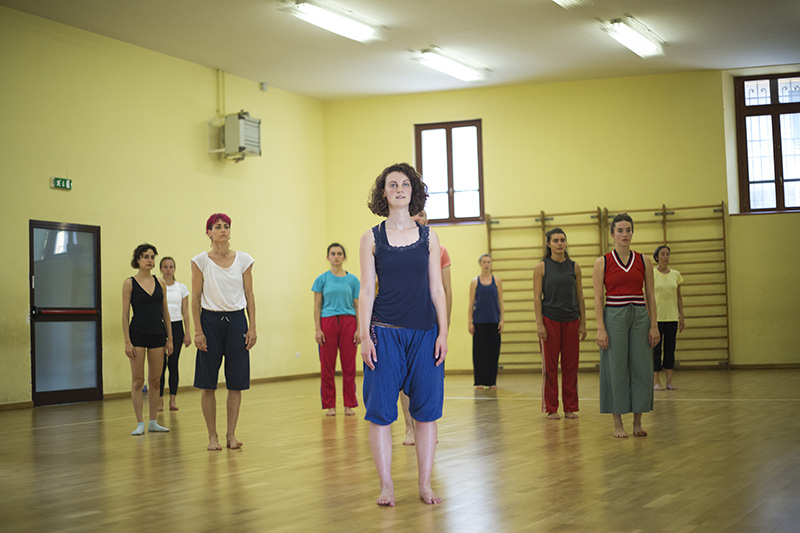
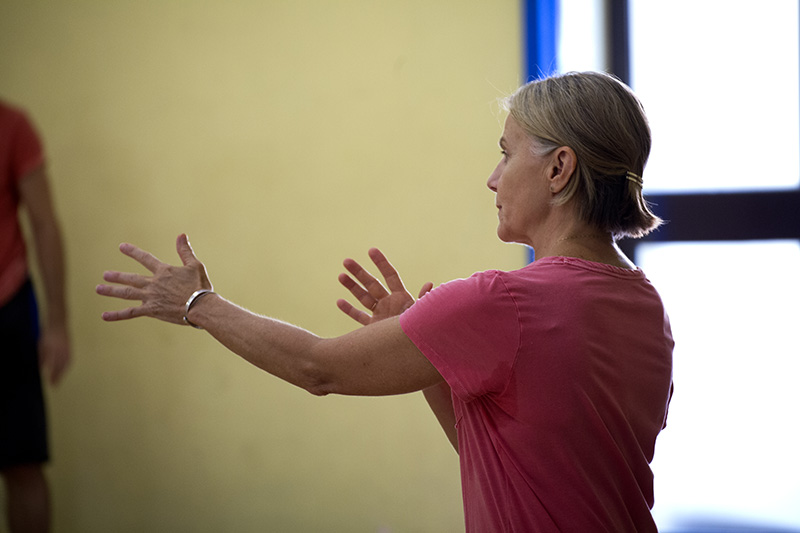
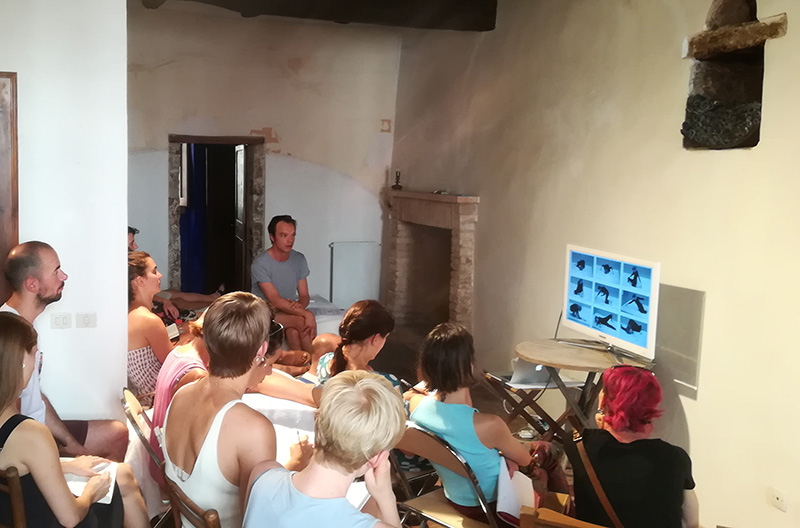
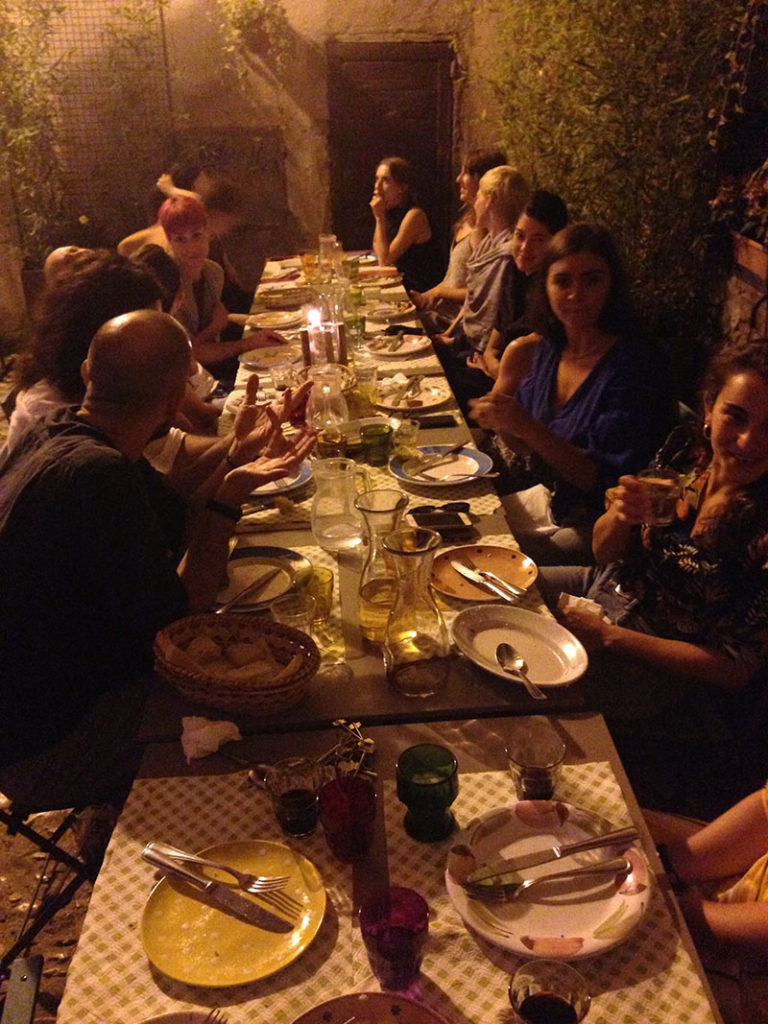
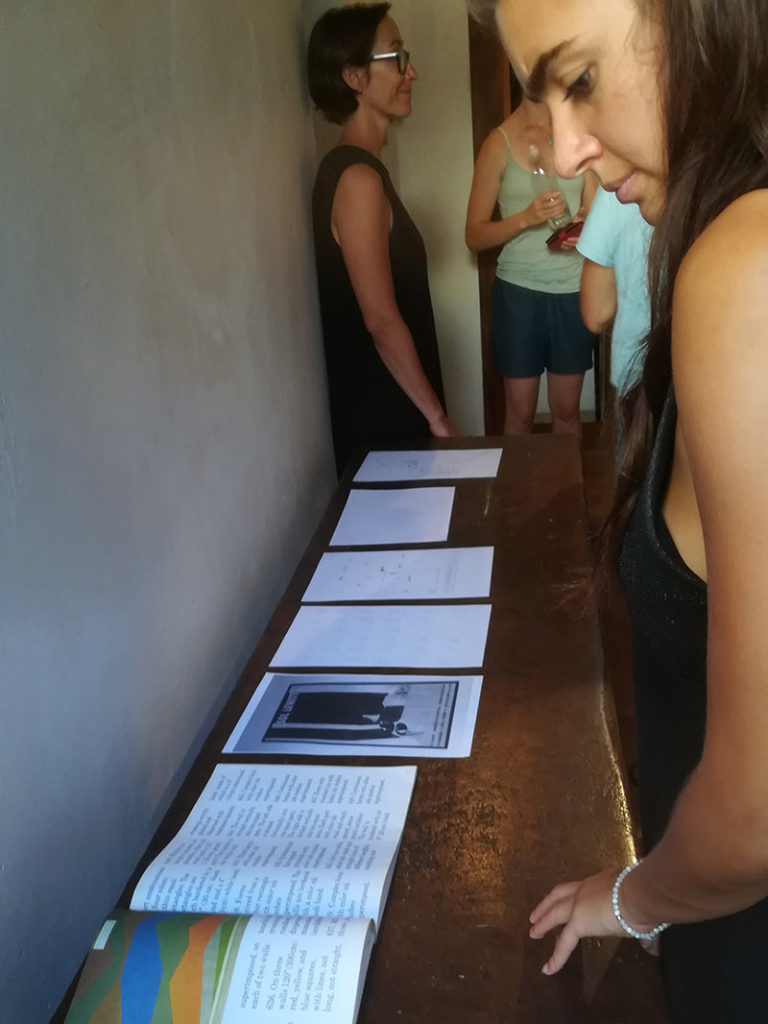
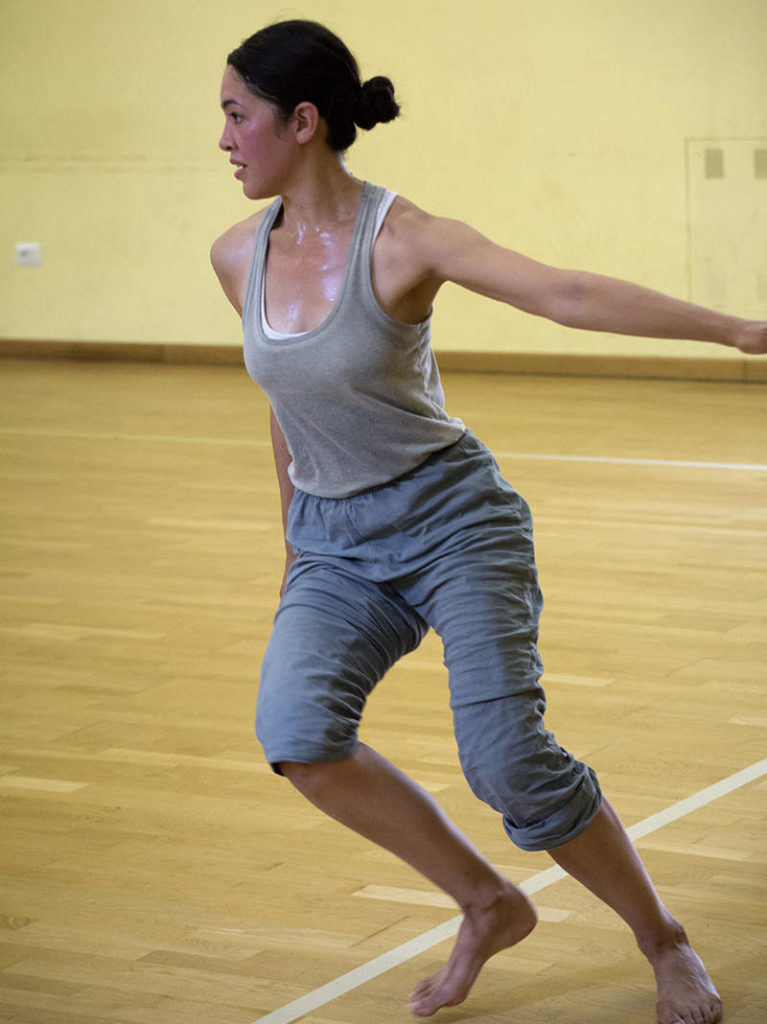
Trisha Brown Dance Company is a post-modern dance company dedicated to the performance and preservation of the work of Founding Artistic Director and Choreographer, Trisha Brown. Established in 1970, TBDC has toured throughout the world presenting the work, teaching and building relationships with audiences and artists alike. Brown engaged collaborators who are themselves leaders in music, theater and the visual arts, including visual artists Robert Rauschenberg, Donald Judd, and Elizabeth Murray and musicians Laurie Anderson, John Cage, and Alvin Curran, to name a few. With these partners, Brown created an exceptionally varied body of work, with premieres and performances for NYC audiences and international counterparts. When Brown retired as head of her Company in 2013, the Board appointed longtime Company members Diane Madden and Carolyn Lucas as Associate Artistic Directors with the mandate that they present her dances in a variety of spaces, indoors and out, proscenium and alternative; develop, deepen and expand the Company’s educational initiatives; and treat the Company’s archive as a living organism to be used to better understand her work, in particular, and dance in general.
Trisha Brown One of the most acclaimed and influential choreographers and dancers of her time, Trisha Brown’s groundbreaking work forever changed the landscape of art. From her roots in rural Aberdeen, Washington USA, her birthplace, Brown arrived in New York in 1961. A student of Anna Halprin, Brown participated in the choreographic composition workshops taught by Robert Dunn – from which Judson Dance Theater was born – greatly contributing to the fervent of interdisciplinary creativity that defined 1960s New York.
With the founding of the Trisha Brown Dance Company in 1970, Brown set off on her own distinctive path of artistic investigation and ceaseless experimentation, which extended for forty years. The creator of over 100 choreographies, six operas, and a graphic artist, whose drawings have earned recognition in numerous museum exhibitions and collections, Brown’s earliest works took impetus from the cityscape of downtown SoHo, where she was a pioneering settler. In the 1970s, as Brown strove to invent an original abstract movement language – one of her singular achievements –it was art galleries, museums and international exhibitions that provided her work its most important presentation context. A major turning point in Brown’s career occurred in 1979, when she transitioned from working in non-traditional and art world settings to assume the role of a choreographer working within the institutional framework associated with dancing – the proscenium stage.
In her lifetime Trisha Brown was the recipient of nearly every award available to contemporary choreographers. The first woman to receive the coveted MacArthur ‘Genius’ Grant (in 1991), Brown was honored by five fellowships from the National Endowment for the Arts; two John Simon Guggenheim Fellowships; and Brandeis University’s Creative Arts Medal in Dance (1982). In 1988, she was named Chevalier dans l’Ordre des Arts et Lettres by the government of France In 1999, she received the New York State Governor’s Arts Award and, in 2003, was honored with the National Medal of Arts. She has received numerous honorary doctorates, is an Honorary Member of the American Academy of Arts and Letters, and was awarded the 2011 New York Dance and Performance ‘Bessie’ Lifetime Achievement Award. In 2011, Brown received the prestigious Dorothy and Lillian Gish Prize for making an “outstanding contribution to the beauty of the world and to mankind’s enjoyment and understanding of life.” – Susan Rosenberg, Consulting Scholar, Trisha Brown Dance Company.
Diane Madden is a performer, choreographer, director and teacher based in NYC. Currently Associate Artistic Director of the Trisha Brown Company, she has contributed to the creation and performance of Trisha Brown’s work since 1980. She performs, teaches and lectures with the company and curates the work for site-specific programs. She’s presented her own solo and collaborative choreography at home and abroad and has enjoyed working with choreographers Jerome Bel, Polly Motley, Lance Gries, Vicky Shick, Juliette Mapp and Cathy Weis. Madden has developed an approach to teaching dance that weaves anatomically grounded technique with improvisation, composition and performance skills. Her worldwide students range from dance artist professionals, through college students to artists from other disciplines including actors, singers, visual artists and composers. Since 2006, Madden has been greatly influenced by her study and practice of Aikido with Fuminori Onuma. The Princess Grace Foundation has recognized Madden with two awards, in 1986 and again in 1994 for sustained achievement. She also received a New York Dance and Performance Award (Bessie) in 1989. In 2012 NYC’s Movement Research honored her, along with the original cast, for Brown’s Set and Reset (1983) collaboration with Rauschenberg and Laurie Anderson.
Spoleto
Mahler & LeWitt Studios
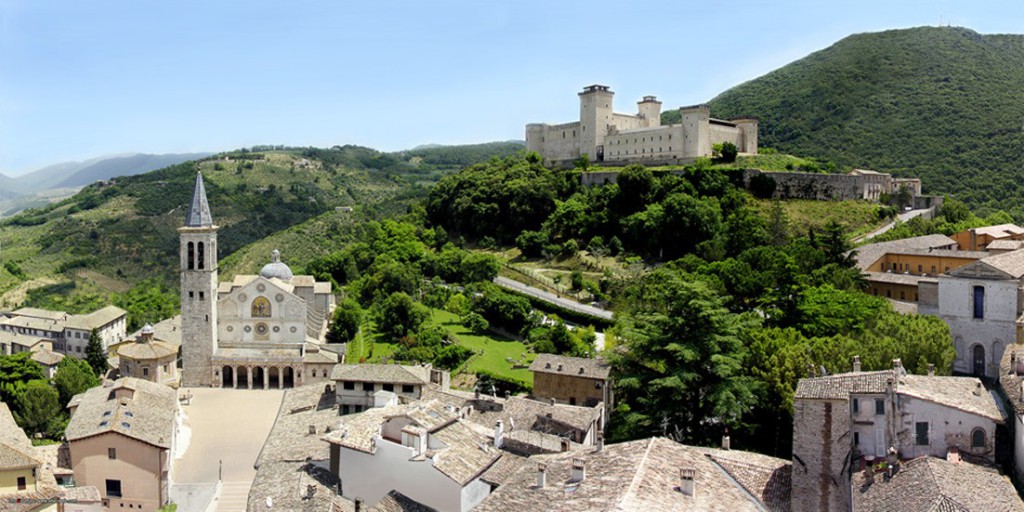
The Mahler and LeWitt Studios is established around the former studios of Anna Mahler and Sol LeWitt in Spoleto, Italy. The residency program provides a focussed and stimulating environment for artists of all disciplines, writers and curators to develop new ways of working in dialogue with peers and the unique cultural heritage of the region. The Torre Bonomo, a medieval tower once used as a residency and exhibition space by the gallerist Marilena Bonomo, is also central to the program.
Spoleto is an Umbrian town, stunningly situated on the top of a hill, crowned with a medieval fortress and an adjoining monumental aqueduct. It is about an hour and a half north of Rome. Further to the legacies of Anna Mahler and Sol LeWitt, Spoleto boasts an impressive 20th Century art history thanks to the famous Festival Dei Due Mondi. The Spoletosfera, a geodesic dome built by Buckminster Fuller in 1967, stands near the gates of the old town and at the train station Alexander Calder built his largest stabil0e, Teodelapio. In performance, Martha Graham, Ellen Stewart, Jerome Robbins and Bob Wilson, amongst others, all have close ties with Spoleto. Other artists who have worked here include Josef Beuys, Jasper Johns, Lynn Chadwick, Henry Moore, Beverly Pepper, David Smith and Cy Twombly. The Duomo boasts frescoes by Filippo Lippi and Pinturicchio. As well as museums there are several important art history libraries and a rich array of architecture, especially Longobard and Roman. The formidable Ponte delle Torri, a vast aqueduct, was marvelled at by Goethe and painted by Turner. Within a short drive are Piero della Francesca frescoes in Arezzo and those of Giotto in Assisi. Two of the most important centres of Italian ceramics, meanwhile, Deruta and Gubbio, are close by as are the key historical centres of the Etruscans and the Umbrii, Orvieto and Perugia respectively.
Getting Here
ROME FIUMICINO AIRPORT
Most residents arrive into Rome Fiumicino, from where you will take the train to Spoleto. You can buy your tickets from the Trenitalia ticket machines at the airport train station – you can select the language you wish and the machine will guide you through the purchase and offer you the quickest options for getting to Spoleto. Almost all options require you to change train at Roma Termini. When changing train at Roma Termini be aware that the Spoleto train often goes from platform 1 EST (binario 1 EST) which is an 8minute walk from the main concourse, about 700metres past the side of platform 1. The train to Spoleto from Roma Termini takes approximately 1hr and 30mins. NB The train station before Spoleto is called Spoleto Baiano, do not get off the train there! We will collect you with your luggage from the train station.
ROME CIAMPINO AIRPORT
From the Airport you need to make your way to Roma Termini, the main Rome train station, for a connecting train to Spoleto. The most convenient way of getting to Roma Termini from the airport is by bus: there is no real difference between the various companies which operate services (ATRAL, Terravision, SitShuttle) so just make your way to the square in front of the airport and take the bus that looks most ready to leave. Tickets to Roma Termini cost around 5euros and the bus takes approximately 45minutes. You can find more information on the transfer options here: www.belanding.com/ airport/rome-ciampino. Once at Termini, use the Trenitalia ticket machines to purchase your ticket to Spoleto – you can select the language you wish and the machine will guide you through the purchase and offer the best route. be aware that the Spoleto train often goes from platform 1 EST (binario 1 EST) which is an 8minute walk from the main concourse, about 700metres past the side of platform 1. The train to Spoleto from Roma Termini takes approximately 1hr and 30mins. NB The train station before Spoleto is called Spoleto Baiano, do not get off the train there! We will collect you with your luggage from the train station.
SAN FRANCESCO D’ASSISI AIRPORT (PERUGIA SANT’EGIDIO)
If you are arriving in to Perugia we will collect you by directly from the airport.
BY TRAIN
Traveling to Spoleto by train? If departing from inside Italy check www.trenitalia.com. If coming from elsewhere in Europe check www.raileurope.com. The website www.seat61.com offers excellent advice on getting across Europe by train. Remember that there is a train station a stop before/beyond Spoleto called Spoleto Baiano, do not get off the train there! The correct train station is simply called Spoleto. We will collect you with your luggage from the train station. Please be aware that to make trans-Europe train travel affordable we need to book it well in advance.
BY BUS
www.Flixbus.com is a good website for looking into European bus travel, as is www.busbud.com.
_______
Register for the TBDC Spoleto Intensive by following the link below.


